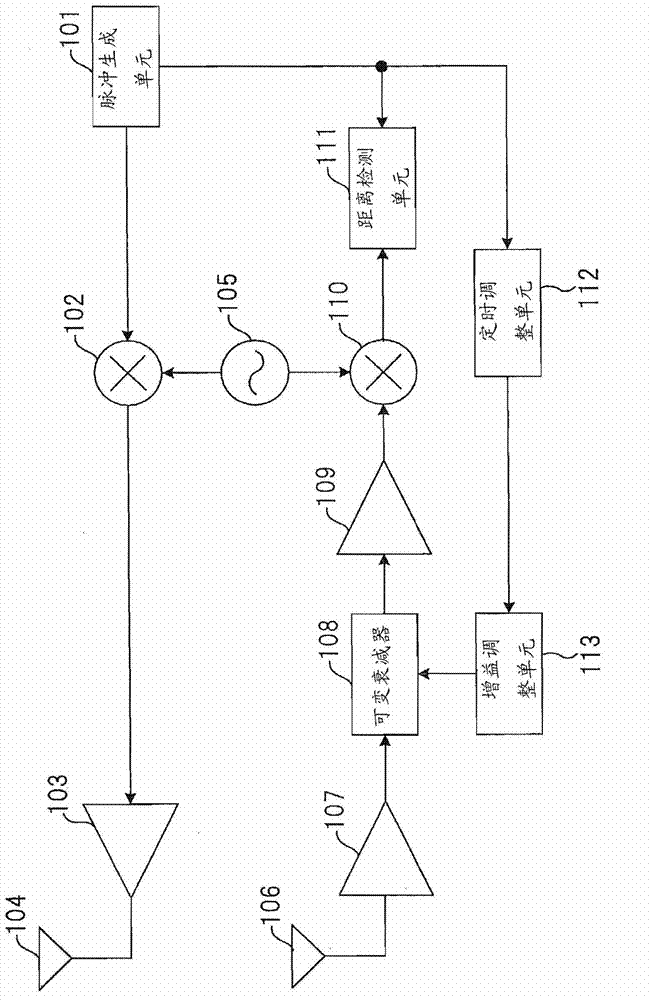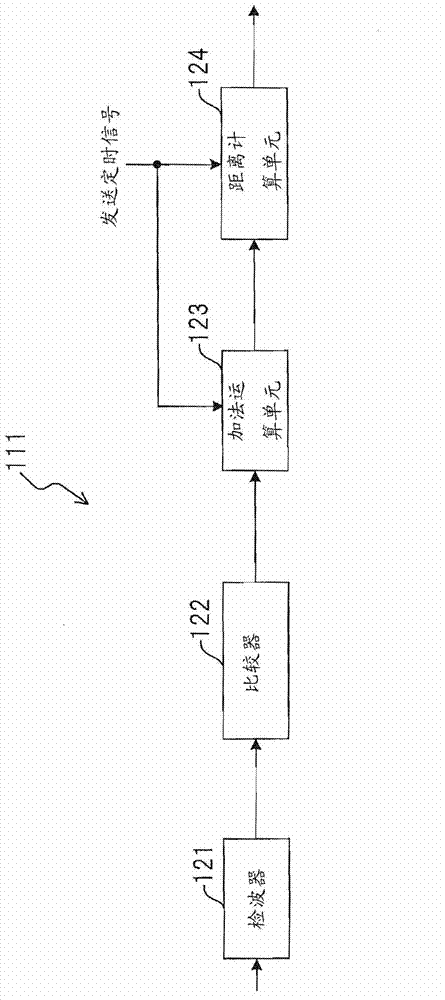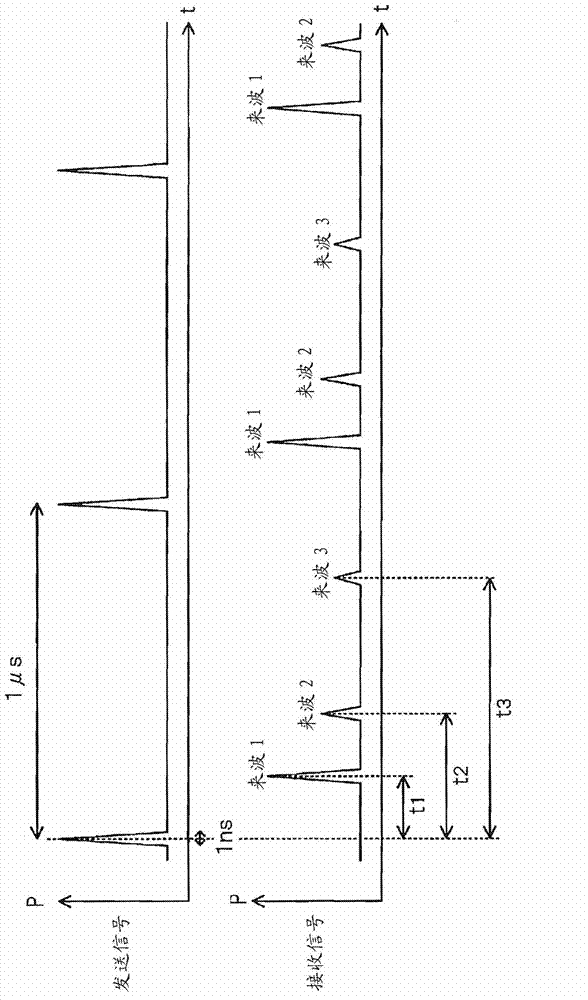Radar apparatus
A radar device and gain adjustment technology, which is applied to measurement devices, reflection/re-radiation of radio waves, and utilization of re-radiation, etc., can solve problems such as the influence of received signal signal power, and achieve the effect of reducing signal distortion and improving deterioration.
- Summary
- Abstract
- Description
- Claims
- Application Information
AI Technical Summary
Problems solved by technology
Method used
Image
Examples
no. 1 Embodiment approach
[0069] figure 1 It is a block diagram showing the configuration of the radar device according to the first embodiment of the present invention. As a transmitting part of the radar device, a pulse generation unit 101 , a frequency conversion unit 102 , an amplifier 103 , an antenna 104 , and a local oscillator 105 are included. In addition, as a receiving section of the radar device, an antenna 106 , amplifiers 107 , 109 , variable attenuator 108 , frequency conversion unit 110 , distance detection unit 111 , timing adjustment unit 112 , and gain adjustment unit 113 are included.
[0070] Here, the frequency conversion unit 102, the amplifier 103, and the antenna 104 are set as an example of a structure realizing the function of the radio frequency transmission unit. In addition, an antenna 106, an amplifier 107, and a frequency conversion unit 110 are provided as an example of a structure realizing the function of a radio frequency receiving unit.
[0071] The pulse generat...
no. 2 Embodiment approach
[0128] Figure 8 It is a block diagram showing the configuration of the radar device according to the second embodiment of the present invention. The second embodiment is an example in which the configuration and operation of the distance detecting means in the radar device of the first embodiment are changed. Here, the description will focus on the parts that are different from the first embodiment.
[0129] As a transmitting part of the radar device, a pulse generation unit 101 , a frequency conversion unit 102 , an amplifier 103 , an antenna 104 , and a local oscillator 105 are included. In addition, as a receiving section of the radar device, antenna 106 , amplifiers 107 , 109 , variable attenuator 108 , frequency conversion unit 110 , distance detection unit 211 , timing adjustment unit 112 , and gain adjustment unit 113 are included.
[0130] Distance detection unit 211 takes as input the signal down-converted to baseband by frequency conversion unit 110 , the gain adj...
no. 3 Embodiment approach
[0154] Figure 13 It is a block diagram showing the configuration of a radar device according to a third embodiment of the present invention. The third embodiment is a configuration example of a radar device having a function of measuring the position of a reflector, in which the direction of arrival of a received pulse of a reflected wave is measured using an array antenna for the receiving antenna. Several methods for determining the direction of arrival of an incoming wave are shown below.
[0155] Here, a configuration using a general beamforming method will be described. Note that the beamforming method is not directly related to the present invention, so a detailed description thereof will be omitted here.
[0156]As a transmitting part of the radar device, a pulse generation unit 101 , a frequency conversion unit 102 , an amplifier 103 , an antenna 104 , and a local oscillator 105 are included. In addition, as a receiving section of the radar apparatus, a plurality o...
PUM
 Login to View More
Login to View More Abstract
Description
Claims
Application Information
 Login to View More
Login to View More - R&D
- Intellectual Property
- Life Sciences
- Materials
- Tech Scout
- Unparalleled Data Quality
- Higher Quality Content
- 60% Fewer Hallucinations
Browse by: Latest US Patents, China's latest patents, Technical Efficacy Thesaurus, Application Domain, Technology Topic, Popular Technical Reports.
© 2025 PatSnap. All rights reserved.Legal|Privacy policy|Modern Slavery Act Transparency Statement|Sitemap|About US| Contact US: help@patsnap.com



